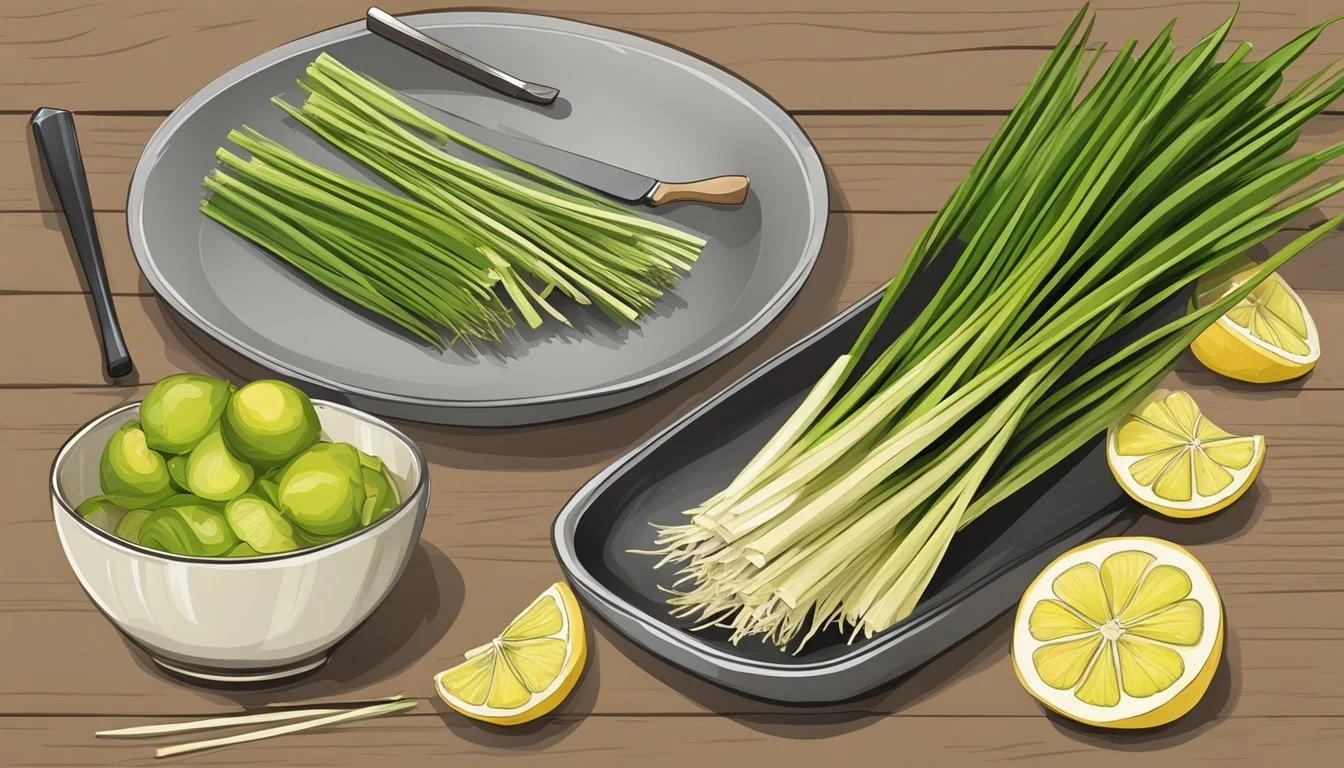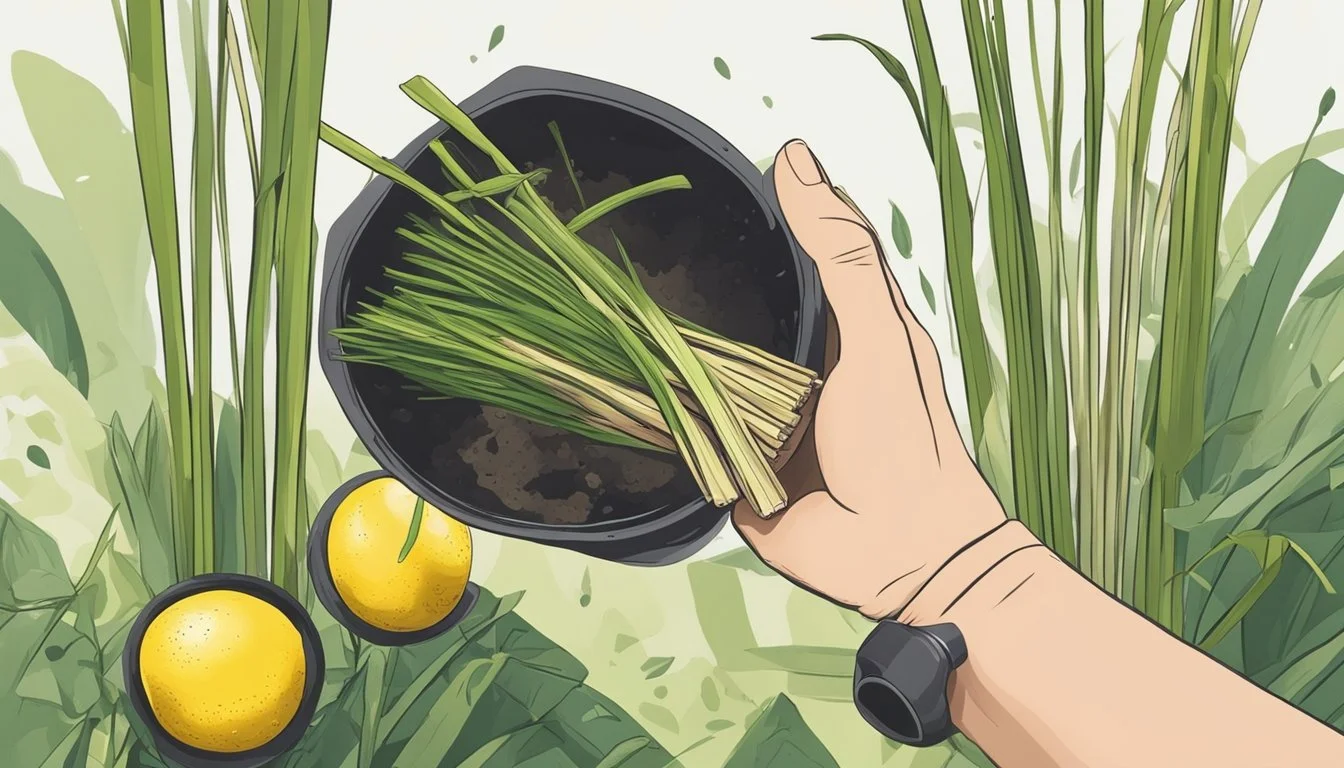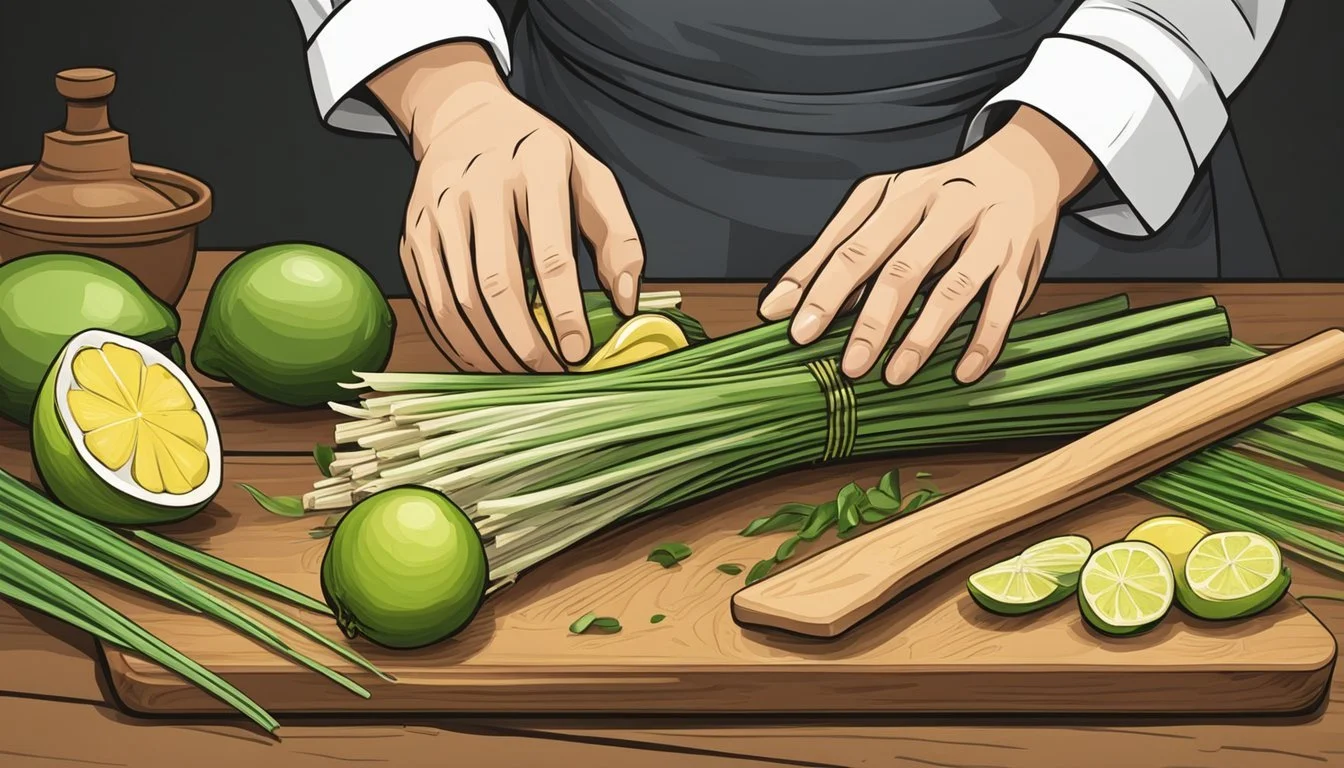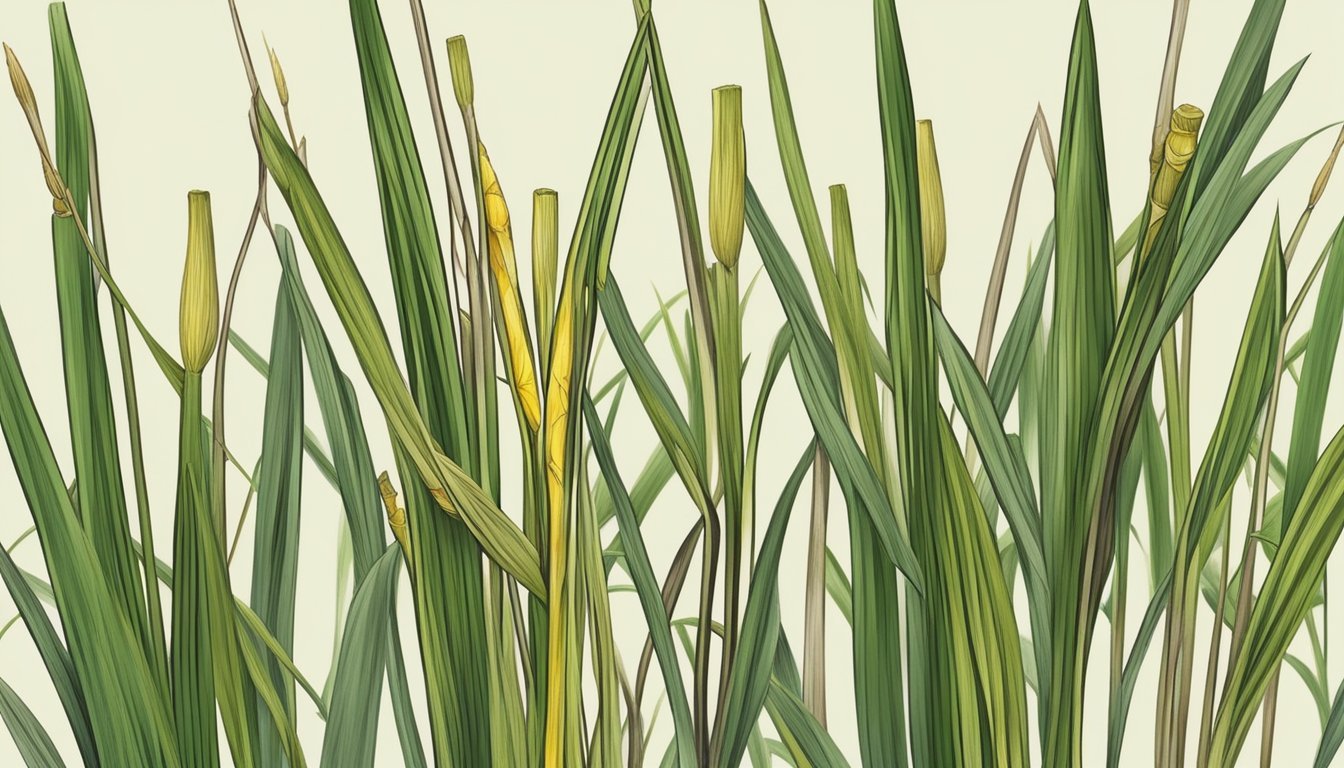Does Lemongrass Go Bad?
Shelf Life and Storage Tips
Lemongrass, scientifically known as Cymbopogon citratus, is a versatile herb cherished in various cuisines, particularly Thai cooking. This fragrant herb, with its citrusy flavor, can elevate dishes and teas alike. But like all fresh herbs, lemongrass does go bad if not stored properly.
When stored in the refrigerator, fresh lemongrass lasts about 2 to 3 weeks before it begins to deteriorate. For longer preservation, many prefer to blend the stalks with a bit of water, pour the mixture into an ice cube tray, and freeze. These frozen cubes can last up to six months and retain much of the herb's vibrant flavor.
Lemongrass paste, another convenient form of the herb, offers a shorter shelf life at room temperature, typically only 3 to 7 days. Refrigerating or freezing the paste extends its usability significantly, ensuring that the bright, lemony essence remains available for your culinary adventures.
Understanding Lemongrass
Lemongrass, also known as Cymbopogon citratus, is a versatile plant appreciated for its health benefits, culinary uses, and unique properties. This section will cover its botanical profile, culinary applications, and health advantages.
Botanical Profile
Lemongrass is a tropical plant belonging to the grass family Poaceae. It grows in dense clumps and can reach up to 5 feet in height. The stalks are fibrous and contain a strong lemon fragrance due to the essential oil, citral. It thrives in well-drained soil with abundant sunlight and is commonly found in regions like Southeast Asia, India, and Africa.
The plant’s scientific name, Cymbopogon citratus, reflects its botanical characteristics. It is a perennial herb with long, slender leaves that are typically dark green. The base of the plant is white, which transitions into green toward the top. This easily identifiable trait helps in its identification and proper use, especially in cooking and medicines.
Culinary Uses
Lemongrass is widely used in culinary dishes, particularly in Asian cuisine. Its citrus flavor enhances the taste of soups, curries, and marinades. The lower part of the stalk is most commonly used because it contains the most flavor.
To prepare lemongrass, the stalks are typically bruised to release their oils and then chopped or ground. It pairs well with garlic, ginger, and chili peppers, making it a staple in Thai, Vietnamese, and Indonesian dishes. Lemongrass tea, with its refreshing taste, is another popular preparation.
For cooks, lemongrass is an essential ingredient that can transform ordinary dishes with its vibrant flavor. It is also increasingly found in Western kitchens, celebrated for its versatility and health benefits.
Health Benefits
Lemongrass is known for its medicinal properties, attributed to its rich nutrient profile. It contains vitamins such as Vitamin C, essential minerals including iron, calcium, potassium, magnesium, zinc, and manganese. These elements contribute to its antioxidant, antibacterial, and antifungal properties.
It is used to alleviate gastrointestinal issues like stomach discomfort and cramps. Lemongrass tea is commonly consumed to reduce anxiety, promote better sleep, and aid digestion. Its essential oil is also utilized in aromatherapy for its calming effects.
Overall, lemongrass not only enhances culinary experiences but also supports overall health and well-being with its nutritional and therapeutic properties.
Fresh Lemongrass Selection and Preparation
Choosing and preparing fresh lemongrass correctly is essential for incorporating its citrusy flavor into dishes, particularly in Thai cuisine and other Asian cooking.
Identifying Fresh Lemongrass
Fresh lemongrass should have bright green stalks and firm texture. The outer leaves should be free from yellowing or browning. A strong, citrusy scent is also a good indicator of freshness. Avoid stalks that feel dry or brittle, as these are signs of aging or decay.
When selecting lemongrass, look for stalks that are about five inches above the base, as this segment contains the most flavor. The base should be slightly swollen and pale yellow.
Proper Preparation Techniques
Start by trimming off the tops and ends of the lemongrass stalks. Peel away the tough, outer leaves to reveal the tender inner core. This inner core is softer and more flavorful.
Slice the stalk in two spots, about half an inch from the root. For some recipes, the stalks can be crushed using a kitchen mallet or the side of a knife to release more flavor during cooking.
For freezing lemongrass, cut it into desired lengths or make a paste using a mortar and pestle. Freeze the paste in 1-tablespoon portions for easy use.
Lemongrass can be used similar to lemon zest to impart a fresh citrus flavor in soups, curries, and teas.
Storing Lemongrass
Proper storage of lemongrass ensures that the herb retains its flavor and aroma for extended periods. Here are ways to store lemongrass, both in the short term and for long-term use.
Short-Term Storage Methods
For short-term storage, fresh lemongrass can be kept in the refrigerator. Start by wrapping the stalks tightly in plastic wrap or placing them in an airtight plastic bag. This helps retain moisture and prevents wilting. Another effective method is to wrap the lemongrass in slightly damp paper towels before placing them in a sealed bag.
Alternatively, keep lemongrass in a jar with a lid in the refrigerator, ensuring it stays fresh for about two weeks. Make sure the jar is airtight to prevent the herb from absorbing other fridge odors. Always check for signs of spoilage such as discoloration or a slimy texture.
Long-Term Preservation Techniques
For long-term preservation, freezing is very effective. Blend lemongrass with a bit of water until it forms a paste. Pour this paste into an ice cube tray and freeze. Transfer the cubes into a sealable plastic bag and store in the freezer for up to six months.
Drying is another method. Hang lemongrass bundles upside down in a dry, dark space for one to two weeks until brittle. Once dried, store them in an airtight container away from direct sunlight and moisture. This drying method keeps lemongrass' flavor intact for up to a year.
Identifying and Managing Spoilage
Detecting the signs of lemongrass spoilage and adopting effective storage practices are crucial to ensuring its freshness and usability.
Signs of Deterioration
Lemongrass paste, like many fresh herbs, shows clear signs when it begins to spoil.
Visual Changes:
The paste may change from its usual vibrant color to a dull or darkened shade.
Any appearance of mold or unusual spots is a noteworthy indicator.
Texture:
Spoiled lemongrass paste can turn slimy or sticky.
The consistency might become either too runny or unusually thick.
Odor:
A sour, off-putting smell is a telltale sign.
If the paste emits any foul odor different from its typical citrus-like scent, it's likely spoiling.
Prevention of Spoilage
Proper storage techniques can significantly extend the shelf life of lemongrass paste.
Refrigeration:
Store the paste in a sealed container in the refrigerator.
A refrigerator temperature between 34-40°F is ideal to slow down microbial growth and oxidation.
Freezing:
For longer storage, freezing is effective.
Freeze small portions in an ice cube tray, then transfer to a freezer-safe bag. This method allows for easy usage of portions.
Hygiene:
Always use clean utensils to avoid contamination.
Ensure the lid of the container is tightly secured after each use.
By recognizing these signs and following these storage tips, the freshness and quality of lemongrass paste can be maintained for a longer duration.
Lemongrass in Cuisine
Lemongrass is a versatile ingredient renowned for its aromatic properties and is widely used in various culinary traditions, particularly in Asian cuisine. This section will explore how lemongrass can be infused into recipes and its optimal food pairings.
Infusion in Recipes
Lemongrass's distinct, citrus-like flavor makes it an excellent addition to a wide range of dishes. To infuse lemongrass in recipes, the stalk is often bruised or chopped and simmered in soups and stews to extract its flavor.
In Thai cuisine, lemongrass is a staple in Tom Yum soup and green curry, providing a bright and fragrant base.
Lemongrass can also be infused in tea, imparting a refreshing taste that's both soothing and invigorating.
When used in marinades, it adds complexity to grilled chicken, fish, and other meats, enhancing the overall flavor profile with its subtle citrus notes. Simply chop the stalks and mix with other seasonings to make a flavorful marinade.
Pairing with Foods
Lemongrass pairs well with a variety of ingredients, making it a versatile addition to many dishes. It complements the flavors of garlic, ginger, and chili, which are often used together in Asian cooking.
In salads, finely chopped lemongrass can add a zesty crunch when paired with fresh vegetables and light dressings.
For seafood dishes, lemongrass shines when used alongside fish and shrimp, accentuating their natural flavors without overpowering them.
When combined with coconut milk in curries, lemongrass contributes to a rich, aromatic profile that balances the creamy texture of the dish. It also works well with lime and cilantro, bringing a fresh and vibrant taste to the cuisine.
Health Implications
Lemongrass offers notable nutritional benefits and potential side effects that readers should be aware of. The specific impacts on health, both beneficial and adverse, need careful consideration.
Nutritional Contributions
Lemongrass is rich in key nutrients and compounds such as iron, calcium, and magnesium. It contains citral, which gives it a strong citrus flavor and provides antioxidant properties. Besides supporting the immune system, lemongrass aids in reducing inflammation and improving digestive health.
The herb also contains vitamins, including small amounts of Vitamin C, which may contribute to overall cellular health and protection against infections. Its high water content helps in maintaining hydration. Additionally, lemongrass can help in managing cholesterol levels and potentially blood pressure due to its antioxidant effects.
Possible Side Effects
While generally safe, lemongrass can pose risks for some individuals. Skin irritation is the most frequently reported side effect, often from the use of lemongrass oil. Allergic reactions can also occur, presenting as dizziness, redness, or swelling.
Ingesting lemongrass may result in digestive issues, such as cramps and nausea for some people. Pregnant women are advised to avoid high amounts of lemongrass due to potential risks to kidney function and overall pregnancy health. Caution is also recommended for those with existing kidney issues, as it may exacerbate their condition.
Alternative Uses of Lemongrass
Lemongrass is not only a culinary herb but also has various uses in aromatherapy and beauty products, leveraging its citrusy scent and anti-inflammatory properties. This section will explore these diverse applications.
Aromatherapy and Essential Oils
Lemongrass essential oil is a popular choice in aromatherapy. It is often used in diffusers to create a refreshing atmosphere. The oil is believed to help reduce stress and anxiety.
Candles infused with lemongrass oil are commonly used to promote relaxation and improve mood. People also use lemongrass essential oil in massage therapies. The oil's anti-inflammatory properties can help alleviate muscle pain and soreness.
Lemongrass in Products
Lemongrass is a common ingredient in various beauty products. It is known for its ability to treat inflammatory skin conditions due to its antimicrobial properties.
Lemongrass oil can be found in shampoos and conditioners, providing a fresh scent and helping to reduce dandruff. In skincare, lemongrass extract is used in lotions and creams to tone the skin and combat acne.
Additionally, lemongrass tea is a popular beverage that can aid digestion and relieve stomach discomfort. It is sometimes used as a natural remedy for colds and coughs.
Growing and Harvesting Lemongrass
To successfully grow and harvest lemongrass, focus on selecting the right location, maintaining proper soil conditions, and using effective harvesting techniques. This ensures a healthy yield of both stalks and leaves.
Cultivation Tips
Lemongrass thrives in sunny, warm locations. Plant in moist, well-draining soil that is rich in organic matter.
Amend the soil with compost before planting for better nutrient absorption. Lemongrass is native to tropical climates and does not tolerate dry conditions, so regular watering is essential.
Space transplants about 2 feet apart. This spacing helps in adequate air circulation, reducing the risk of diseases. Using mulch can help retain soil moisture.
During cooler months, lemongrass may become dormant. Providing a layer of mulch can protect the plant in winter, minimizing the risk of wilting.
Harvesting Techniques
Begin harvesting when the stalks are about ¼ to ½ inch thick. Older stalks should be prioritized for harvesting.
Cut or snap the stalks as close to the base as possible without disturbing the roots. Opt for a sharp knife or garden shears to avoid damaging the plant. The lower part of the stalk is the most flavorful and commonly used in cooking.
Ensure consistent watering and remove any stalks that show signs of rust or damage. New stalks will grow in the spring, allowing for continuous harvest throughout the growing season.
By following these methods, one can maintain a healthy and productive lemongrass plant.








